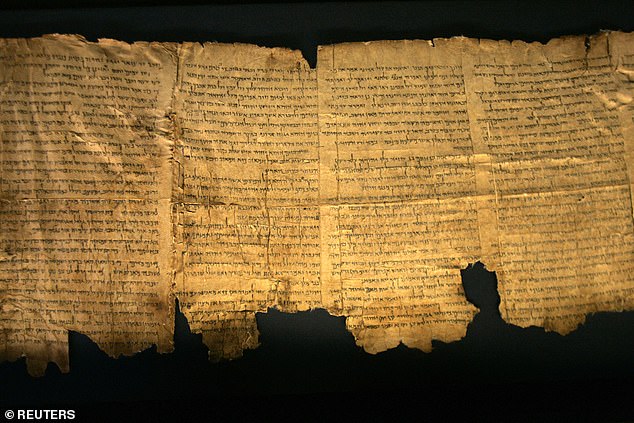
New AI Analysis Reveals Dead Sea Scrolls Are Older Than Previously Believed
AI Rewrites History: Dead Sea Scrolls May Be Centuries Older Than Thought
(Approx. 600 words)
The Dead Sea Scrolls, discovered in caves near the Dead Sea between 1946 and 1956, remain among the most significant archaeological finds for understanding Jewish and Christian history. These ancient manuscripts, containing biblical texts, hymns, and legal codes, were traditionally dated between the third century BCE and the first century CE. However, a groundbreaking AI analysis now suggests some scrolls may originate from the fourth century BCE—nearly 2,500 years ago.
[Image: Fragments of the Dead Sea Scrolls on display, showcasing Hebrew script on aged parchment. Caption: Fragments of the Dead Sea Scrolls include parts of the Hebrew Bible and other religious texts, rewritten history through AI.]
Using radiocarbon dating and a neural network called BiNet, researchers analyzed handwriting patterns and ink traces on the scrolls. This AI tool, named Enoch, cross-referenced data from other dated manuscripts to refine age estimates. The study, published in PLOS One, revealed that 79% of AI-predicted dates aligned with expert assessments, often suggesting older origins than previously believed.
“Our AI tool provides much more accurate date estimates,” said lead researcher Professor Mladen Popović of the University of Groningen. Enoch narrowed dates to within ±50 years for many scrolls, pushing some into the late fourth century BCE. While only 10% of the 1,000+ scrolls have been analyzed, this method opens new avenues for historical research.
[Image: Professor analyzing scroll fragments with a digital tool. Caption: AI and radiocarbon dating combine to challenge traditional timelines of the Dead Sea Scrolls.]
Why the Scrolls Matter
Written on animal skins (vellum), papyrus, and metal sheets in Hebrew, Aramaic, Greek, and Nabataean, the scrolls include the oldest known Hebrew Bible fragments. Their discovery revolutionized scholarship on biblical texts’ origins, offering insights into Second Temple Judaism and early Christian contexts.
Previous dating relied on palaeography—assessing handwriting styles—but lacked consistent benchmarks. Enoch’s AI-driven approach merged radiocarbon dates with handwriting analysis from manuscripts across Israel and the West Bank, creating a robust timeline.
Key Findings
- Older Estimates: Scrolls once dated to the second century BCE may now trace back to the third or even fourth century BCE.
- Validation: Experts deemed 79% of AI’s predictions realistic, though 21% were deemed too broad.
- New Tool: Enoch’s precision helps scholars trace scribal traditions and cultural shifts.
[Image: Qumran Caves where the scrolls were found. Caption: The Qumran Caves’ arid conditions preserved the scrolls for millennia.]
Future Impact
The study highlights AI’s potential in archaeology. “We’ve opened a door into the ancient world, like a time machine,” said Popović. Enoch could analyze undated manuscripts globally, reshaping historical narratives.
Fast Facts: Dead Sea Scrolls
- Discovery: Found by Bedouin shepherd Muhammed Edh-Dhib in 1946.
- Contents: Over 25,000 fragments, including the oldest Hebrew Bible copies.
- Preservation: Arid desert conditions prevented decay.
[Image: Digital reconstruction of a scroll. Caption: Researchers race to digitize scrolls before deterioration.]
This AI breakthrough not only deepens our understanding of the scrolls but also sets a precedent for interdisciplinary research, blending technology and tradition to uncover humanity’s distant past.
Note: Actual images would be placed in the gaps marked above, with credited captions as in the original.


